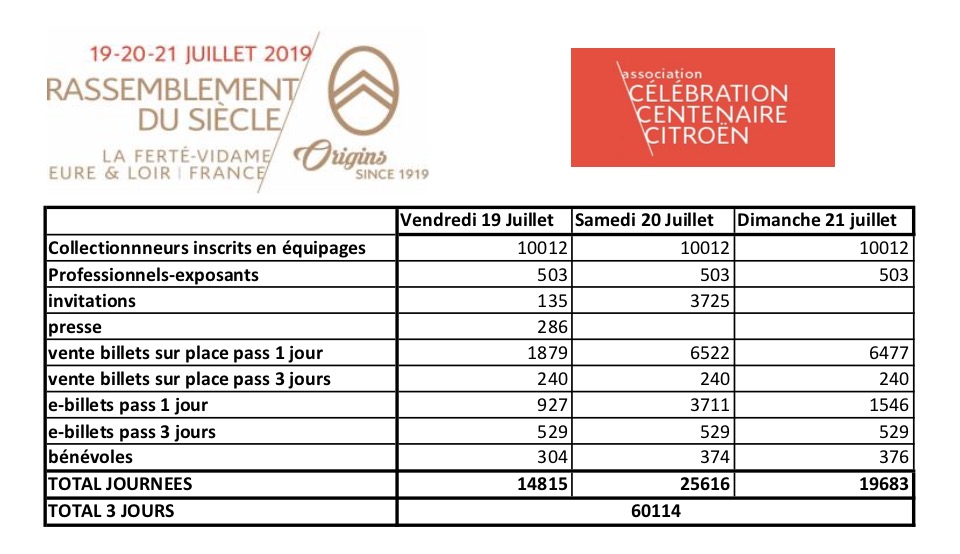Citroën La Ferté-Vidame Centenaire Celebration – Report
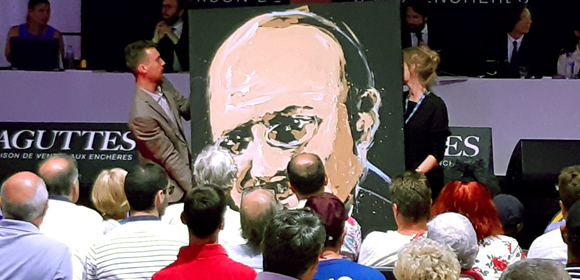
by George Dyke…..
You know you have arrived at the grand Citroën anniversary celebration of the century when, as while driving toward the village of La Ferté-Vidame, you see La petite “Rosalie”, the race car that established a succession of records in 1933 at the Montlhéry Autodrome racing circuit, coming toward you full throttle and whizzing by you with a driver in a period white racing suit at the wheel. That moment was a long time coming as we had planned, for over 18 months, to travel to Centenaire Citroën which by this time the company had theme-named “100 Origins”.
View a full photo gallery of the event here:

Originally slated to be held at the Michelin test track facility near Lourdes, because of limited local accommodation and anticipated huge attendance, it was changed to La Ferté-Vidame, in France’s central Loire Valley region, the site where the 80th Anniversary of the Traction Avant has held in 2014. But this time, rather than 1,500 Tractions being displayed in front of the ruins of the chateau on the sprawling land at the edge of town, registration was initially opened for 4,000 Citroëns of all kinds and plans were made to handle as many as 40,000 people! Judging by the line-up on the Thursday (July 18) just to pick-up registration credentials, and the cars cued up for kilometers on Friday and Saturday to actually get onto the show field, I would say far more than these numbers appeared to absolutely jam a village that was hard-pressed to hold the Tractions back in 2014. This was precisely what Citroën was hoping for as this was proof of brand popularity to the various media organizations they had invited.
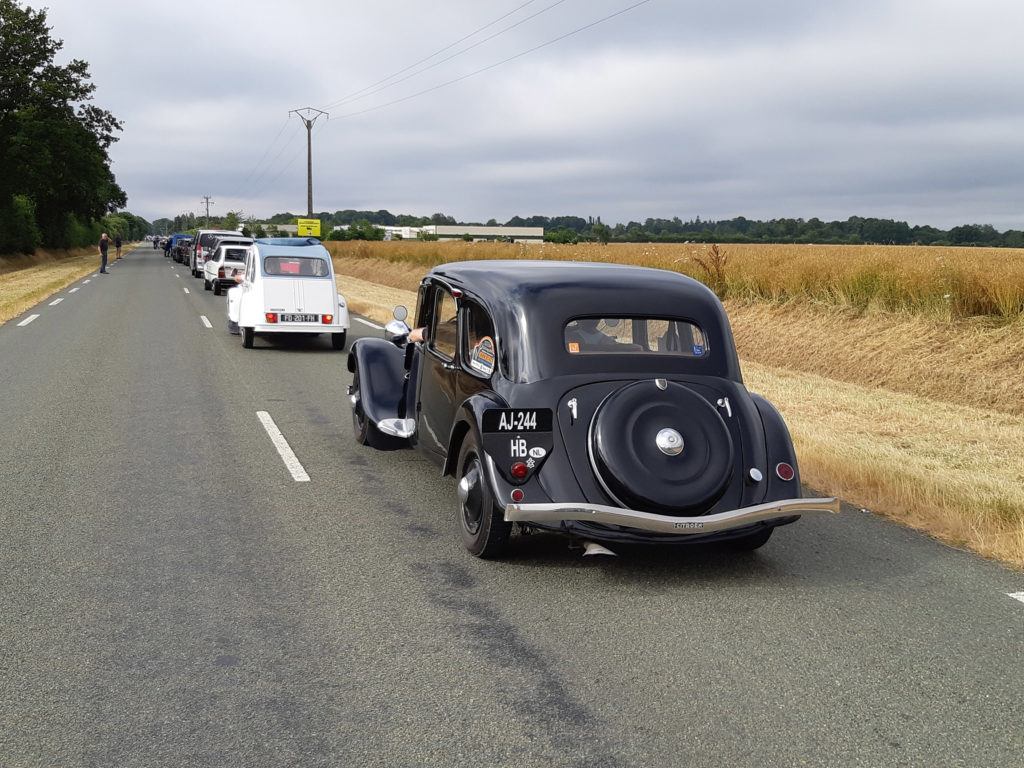
On top of backed up traffic, the main street was closed so a variety of food vendors and artisans could sell their wares aside from the food and other vendors who were in the show area itself. People who had not registered for the event and purchased day tickets, driving cars other than Citroëns, were ushered out to various lots (well, fields) surrounding the town and bussed into the event. As busses were packed and clogged in traffic, many chose to walk the few
Even on the airplane ride over to France the video selection included an episode of the National Geographic TV show “Car S.O.S.” where the hosts, Wim and Fuzz take a trip to Northern France to collect a long-abandoned DS that was purchased new by Roger, a 94-
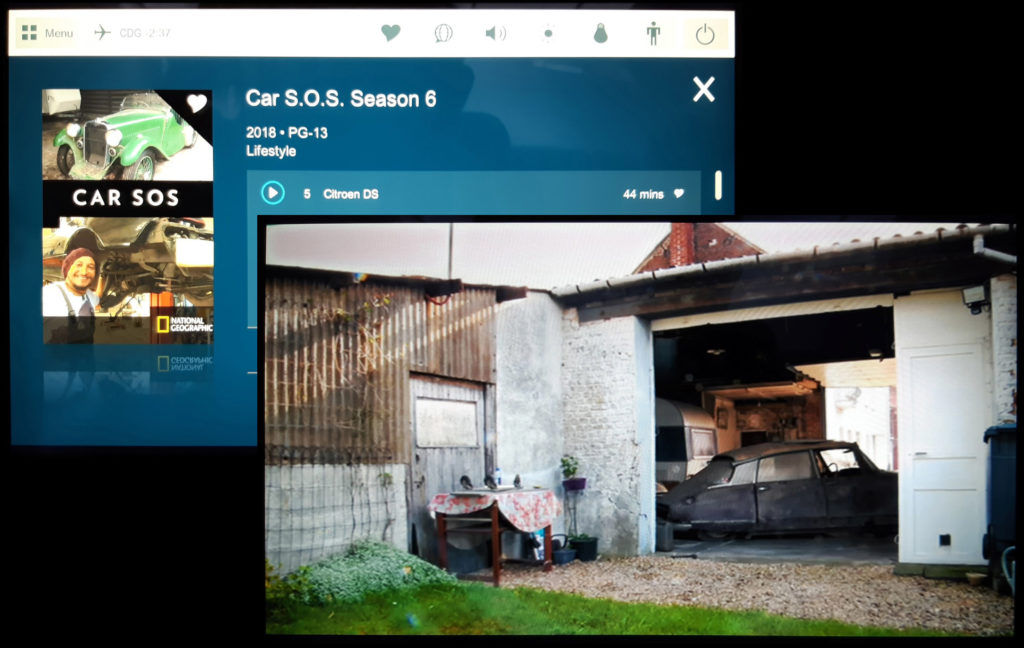
He had intended to get it back on the road but instead had to care for his ailing wife for a number of years. It was a touching episode where his family gathered to present the restored DS to him. An appropriate primer for the days to come…
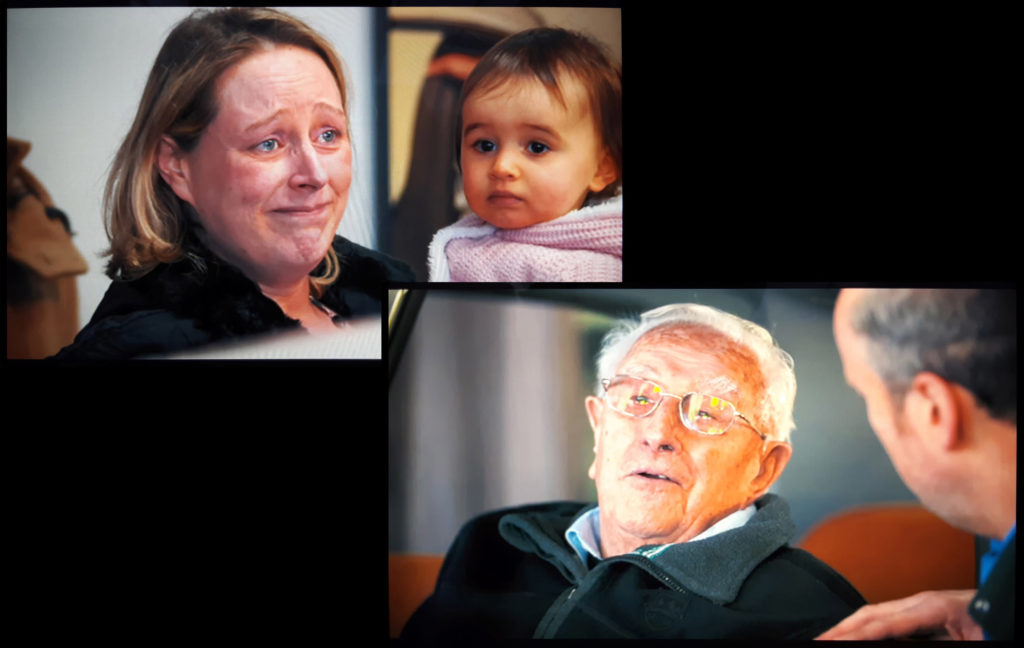
On the way to La Ferté-Vidame (located about 130 km southwest of
It was evident that Citroën staged an event of this magnitude not just for owners to celebrate their achievements of the past century, but to tease the press about what Citroën might be doing in the future. A huge display pavilion was erected to showcase the 19_19 Concept and the Ami One Concept, as well as to wine and dine the press and meet Citroën CEO, Linda Jackson, and other brand executives.
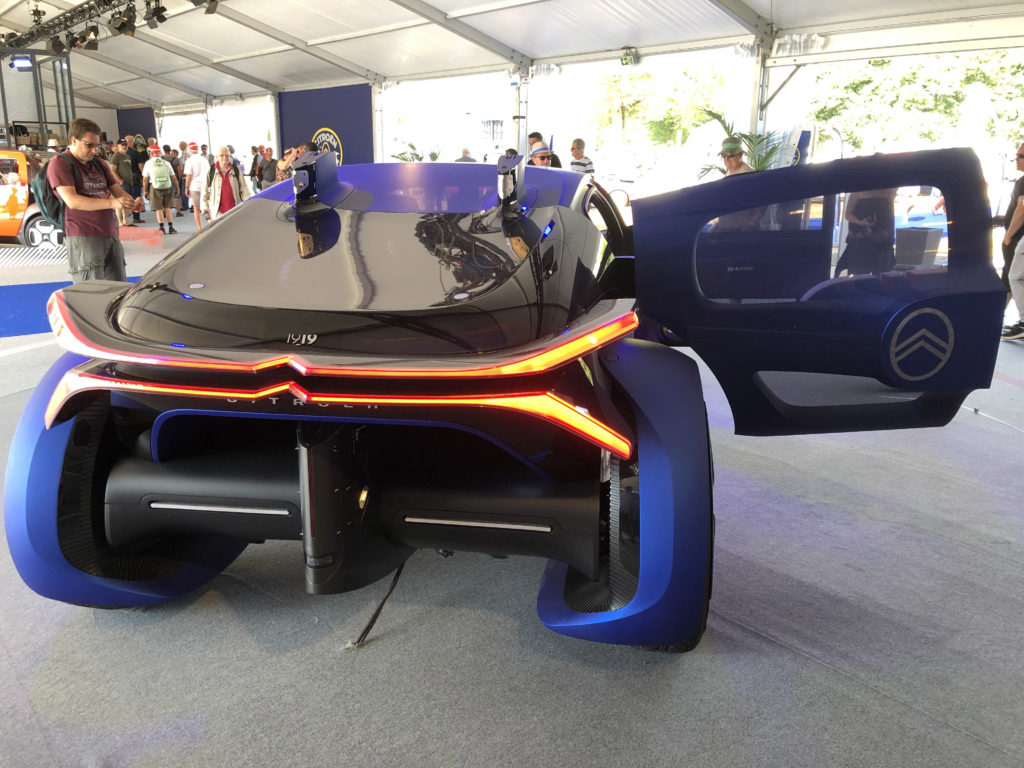
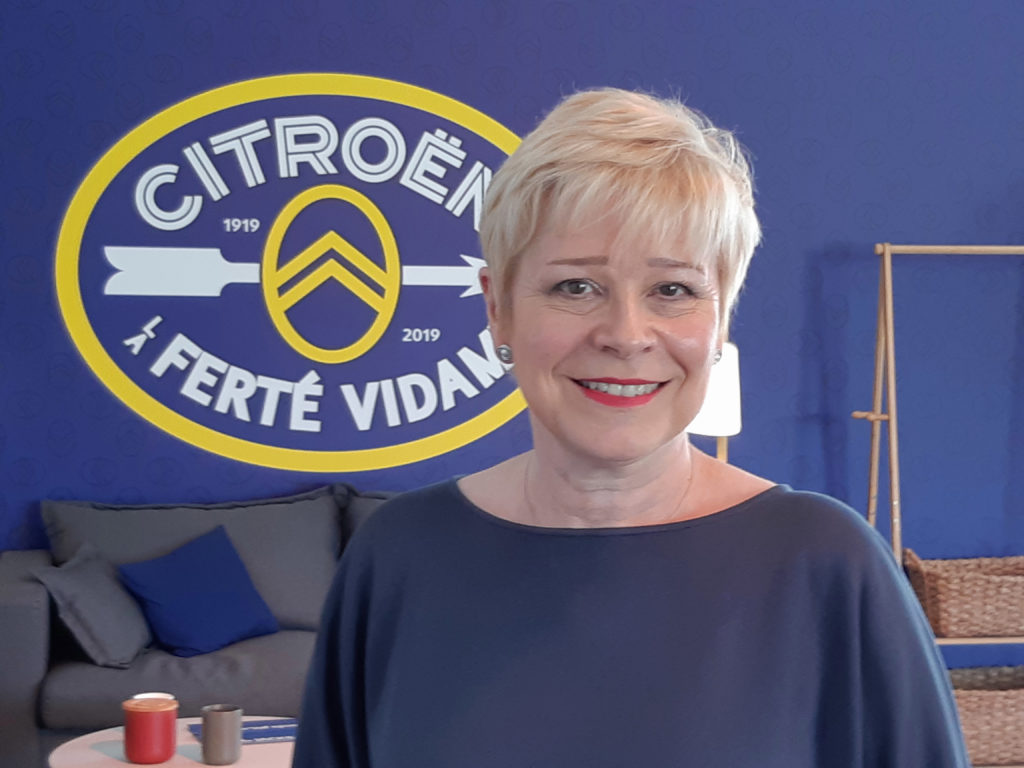
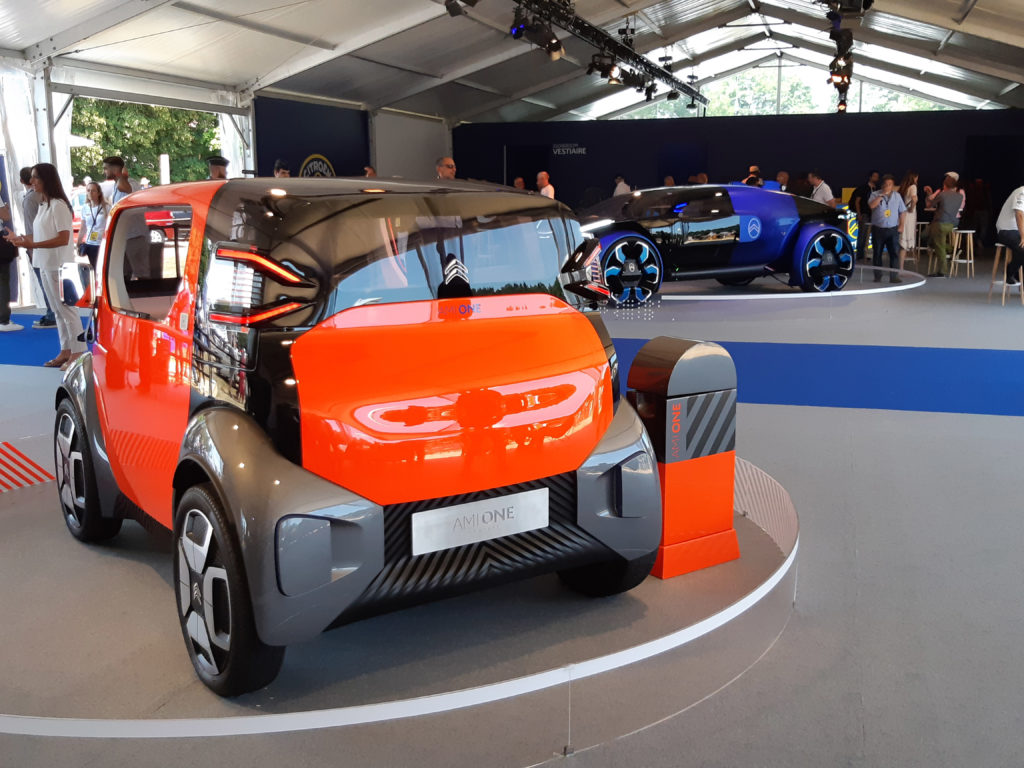
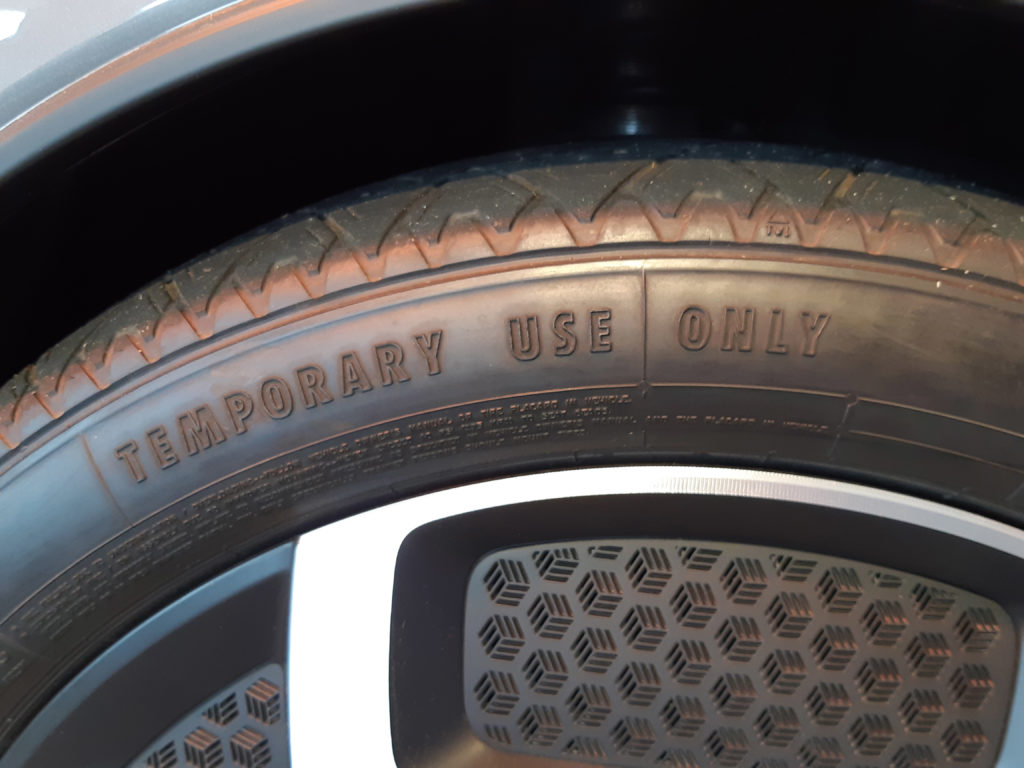
Rather odd that they would display a concept and not bother to fit a proper tire (they could have probably taken the skinny tires from a BMW i3 or if they were going to use spacers, at least grind off the writing so the Michelin tire looks proper. Heck, with the speed limit of the Ami One topping out at 28 mph, (conforming to regulations by some countries in Europe where there is a class of vehicle called quadricycles, which are able to be driven by 16-year-olds (14 in France) that don’t have a full driver’s license, they don’t have worry showing such a warning. There is no way they would have liabilities from anyone exceeding the cars speed capability!
Xavier Peugeot was in attendance (to give Peugeot’s perspective on Citroën, and André Citroën’s grandson, Henri-Jacques, was a featured attendee that gave the commencement speech (shown in full at the end of this article) and paraded around the show.
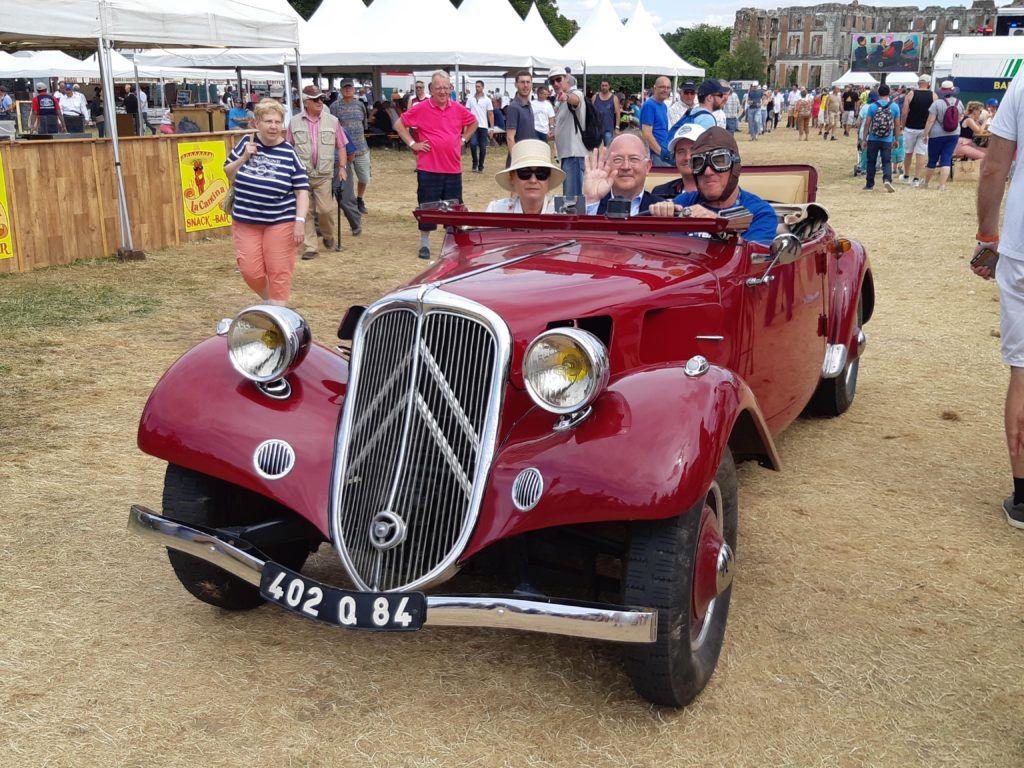
Citroën also had a boutique in their pavilion for “100 Origins” clothing and memorabilia purchases. The best deal in the boutique was the “World Inspired by Citroen” collector’s catalogue that has been produced in partnership with the magazine IDEAT in XXL format (30 x 38 cm), 156 pages, for just € 20. If you didn’t see it (or didn’t want to take the massive book home in your luggage), the good news is that the book and be purchased online here: https://lifestyle.citroen.com/en/shop/_/pr5883/collector-catalogue-100-photos-100-years.
Being an Amicale Citroën International delegate from Canada, I attended the annual general meeting which was held at La Ferte-Vidame on the Friday evening and enjoyed a dinner for all the ACI delegates. Richard Bonfond and Michael Cox, the two USA delegates, also attended. We experienced traffic frustration firsthand in the bus going to the event which was about 35 km northeast from La Ferte-Vidame. We were supposed to depart at 6 pm but due to come confusion by the Mexican ACI members, the bus departure was delayed by about 20 minutes. Then the fun really began – as we left La Ferte-Vidame we experienced road closure after road closure, ultimately having us go around in a circle and back to where we started about a half hour earlier! On the way out we passed a group of weary looking day pass attendees waiting at a shuttle bus stop trying to get back to their parking lot on the outskirts of town. As we returned we saw the same group still waiting and looking quite frustrated, especially seeing our ACI bus again. We finally got a escape route thanks to some sweet talking to a guard at one of the roadblocks who let us pass and the bus made its way to the meeting arriving us about an hour late. Ah – so French. As for the others at the shuttle bus stop, I assume a bus showed up sometime that evening as the next day at La Ferte-Vidame there was no sign of a french revolution as a result of the previous evening.
At the ACI meeting, we approved the application from Switzerland for the next 2CV World Meeting to take place in the summer of 2021 in the French-speaking part of the country, in the canton Jura, not far from the regional capital Délémont.
Also at the ACI meeting, Linda Jackson and all the corporate types there were emphatic that Citroën will not be returning to the US market by means of selling cars. That decision has been made by PSA top-level management (read CEO Carlos Tavares) and a return will be in the form of Peugeot. Citroën will focus on emerging markets (namely India) with a new generation of innovative automobile offerings that they feel will empower a new generation of those who want mobility there. She did mention that by the sheer number in attendance at La Ferté-Vidame and the enthusiasm shown for the brand, (like no other by the way), she hopes to capitalize on the Citroën lifestyle experience by marketing it globally, and this includes North America. She cited to me the surprising success they have experienced in the USA with demand for Citroën’s motion sickness glasses. Though she also teased, at the ACI meeting, that Citroën is working on a new flagship model that will be avant-garde and packed with technology that should be introduced in the 2022 to 2023 timeframe. Alas, we won’t be seeing it over here.
Let’s get back get to the show itself – a huge conglomeration of Citroëns of every model. The assembly of Traction Avants alone (sorted by year) far outnumbered what showed up there in 2014. At the front of the Traction field, was the largest gathering of Citroëns from 1919 to the Traction Avant era I have ever seen. Besides that, an equally populated and impressive field of DS and ID. In other designated areas beyond the main field of La Ferte-Vidame were lots where display parking, organized by model, was provided for 2CV, HY Van, Ami, GS, SM, CX, BX and more modern models. There is a great video of the variety (in French) that you can view here: https://www.youtube.com/watch?v=5dzO9DpFxdk&feature=youtu.be. (They got me at the
And of course there were the one-offs and variants that added to a further degree of eclectisizm to the mix.
There was excitement in the vendor area where not only a myriad of parts for virtually all models of Citroëns could be purchased. Examples of exquisitely restored DS, electrified 2CV’s, two modern takes on the HY Van and an SM from SMA2 (named SM2) that was reworked to modern car specs were on display.
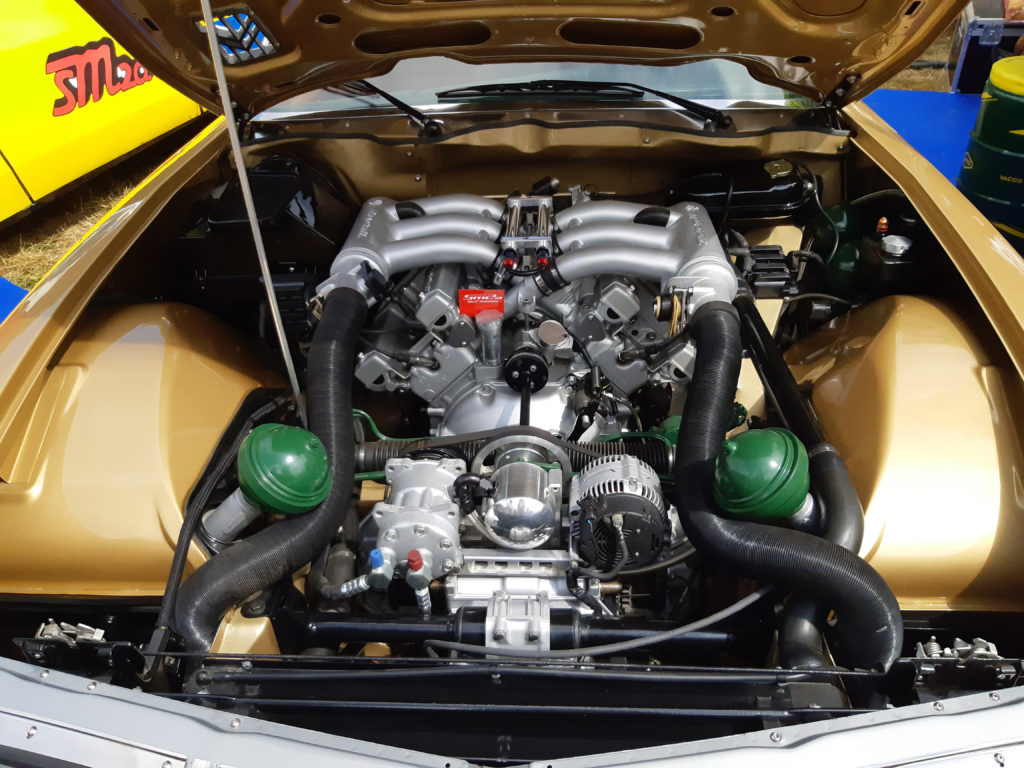
I spoke with Jean-Michel Gallet, Citroën guru and founder of SM2A. His feeling is that if Citroën is not going to introduce a new super-coupe, then why not take the SM and modernize it so you have both timeless design, the latest in drivetrain technology and hydropneumatic suspension, all for about 240,000 euros. (If I were to get an SM2A, I’d also have them install the suspension from a 1990s Xantia and have totally flat Activa cornering!)
One thing that generated amusement and amazement was a child’s car version of a 1950’s 2CV replete with every component scaled down to 1/2 size. Even the lug nuts!
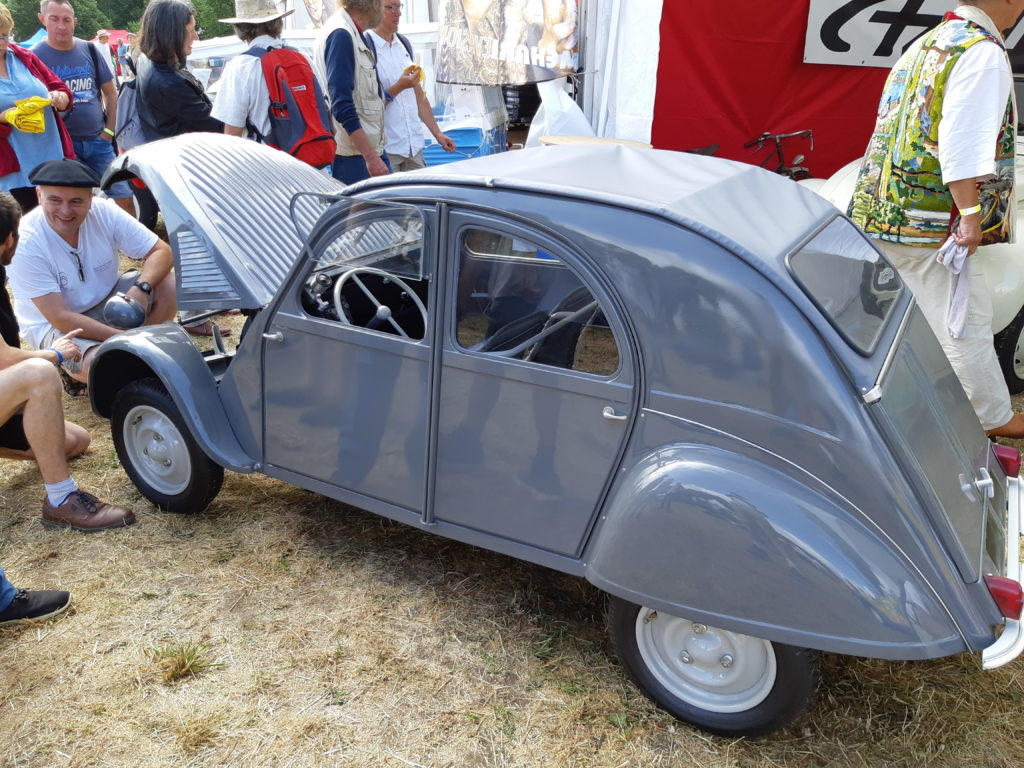
Citroën brought quite a few cars from Le Cnservatoire. On display , in front of the Citroën PR pavilion, were rows of past models and race cars, strategically placed to impress the press and reinforce the message of Citroën’s heritage.
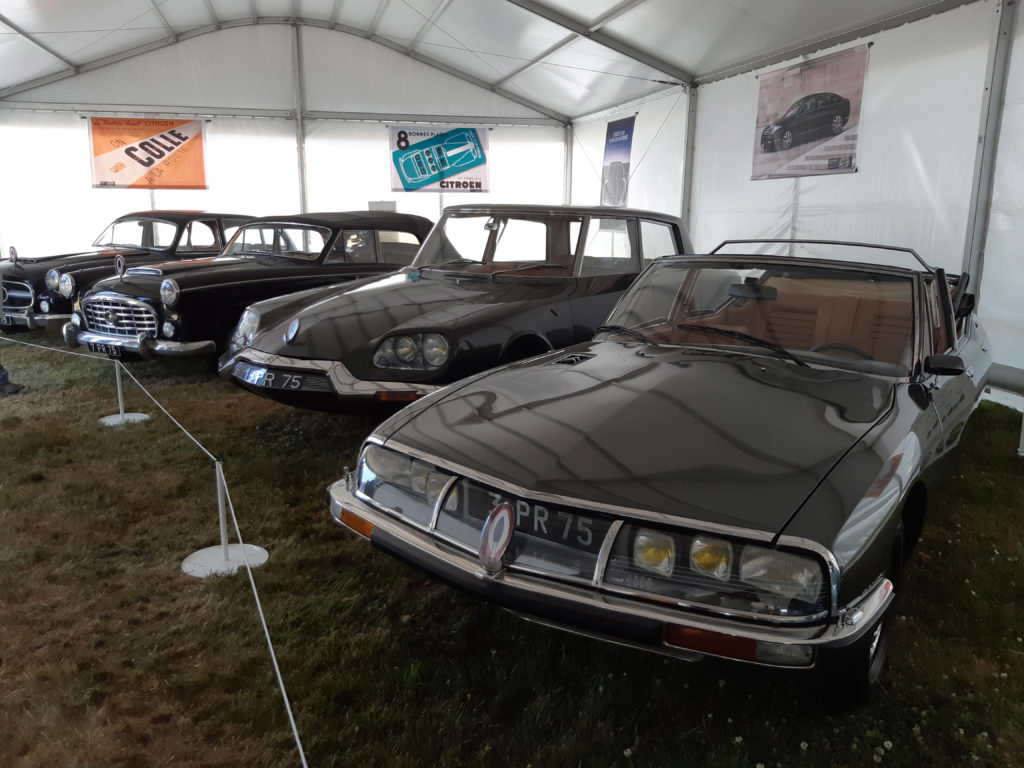
On display in a large separate tent were all four Citroën based versions of the Presidential limousines: The 1955 Franay 15-6H custom body – In 1955, French president René Coty, an older man with health problems, was recommended Citroën’s hydro-pneumatic suspension by his physician. He personally ordered 15 H limousine official state cars (only two were ever made) built on a stretched Citroën 15 H platform to replace both his predecessor’s Talbot-Lago convertible. The first 15 H-based state car was a limousine designed by Philippe Charbonneaux and bodied by Franay in 1955 – the coachbuilder’s final piece before closing shop. The second presidential 15 H, a four-door convertible parade car, was made by Henri Chapron in 1956. Its beltline dip was designed by Carlo Delaisse so that the VIP likely sitting there might be better seen by the public. Both were in service until about 1974, when these and several other state cars were (bizarrely) donated by president Pompidou to his doctor.
President De Gaulle’s special elongated presidential DS, built by Chapron for De Gaulle, is a massive 6.3 m in length, 11mm longer than the presidential limousines used by Lyndon B Johnson and Richard Nixon at the time to give a feeling of superiority while still managing to turn within the confined spaces of French government courtyards. De Gaulle disliked the screen separating him from the chauffeur and continued to use the Franay and Chapron 15-6 based cars or a DS with folding roof in which he could stand up for parades.
A 5.6 m long, a presidential SM was also present, though not an original one, built by Chapron for Président Pompidou who, in 1971, commissioned Chapron to build two four-door parade cars first used on the occasion of the 1972 state visit to France of Queen Elizabeth II of the United Kingdom. (This one was a replica built in 2005 according to the exact plans and with the same requirements as the original versions
Accompanying the limos, Citroën also brought 3 of the original Type A TPV’s (the prototype of the 2CV.
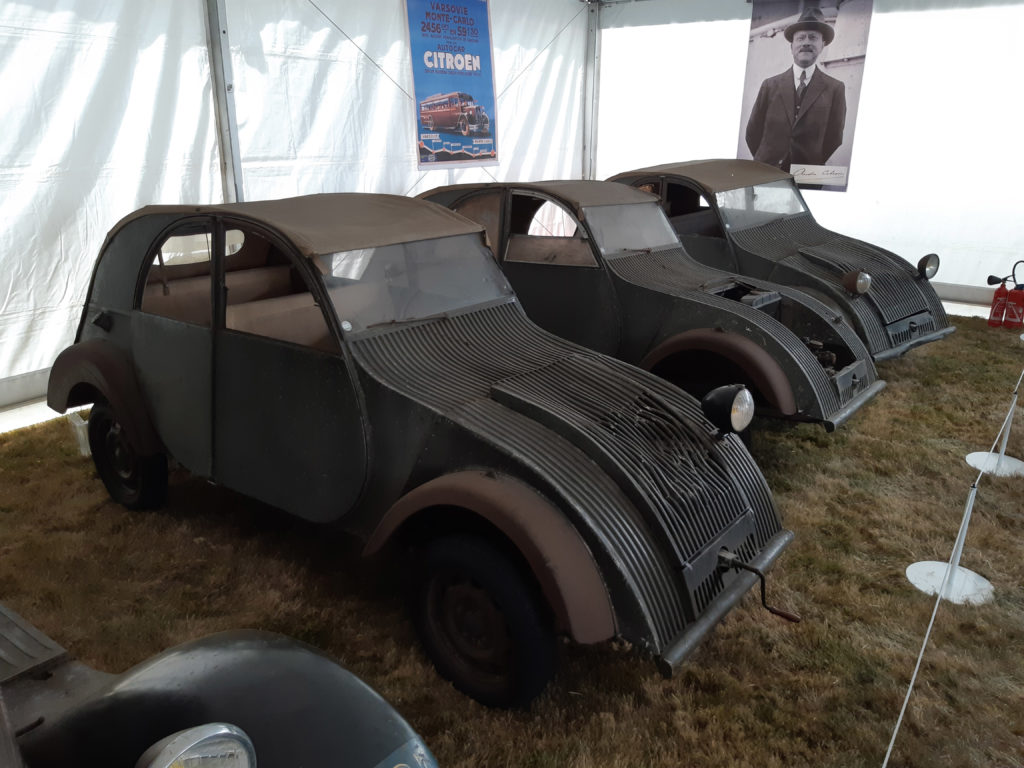
Citroën was planning to introduce their Type A at the 1939 Paris Auto Show, but the event was cancelled when World War II broke out. Pierre Boulanger, managing Director of Citroën at that time, asked that the 250 pre-production cars already assembled be hidden as fast as possible so that the German forces wouldn’t see them. Several TPVs were buried at secret locations, one was disguised as a pickup, and the others were destroyed. For over half a century it was believed that the project was so well hidden that all the prototypes were lost at the end of the war. (In fact, it seems that none of the hidden TPVs was lost after the War, but in the 1950s an internal memo ordered them to be scrapped). Two prototypes were known at that time to have survived that order; a pick-up and one TPV 4 door. Then in 1994, these 3 TPV prototypes were discovered stashed in the attic of a building at the Citroën test track facility at La Ferté-Vidame. (They had been placed there, hidden from the top management, by some workers who were sensitive to their historical value).
Speaking of the test track, many who registered their cars for the event got to partake in the drive of a lifetime – taking their Citroëns for a drive on an 18 km route within the test track facility specially mapped out so you could experience not just the
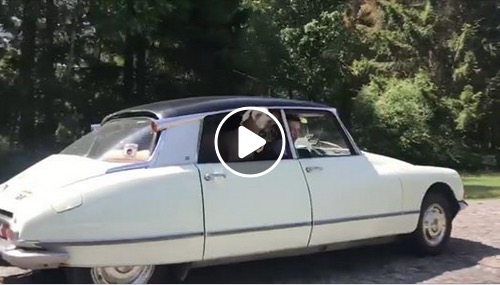
I managed a ride around the track in a Traction cabriolet. Greg Long shipped his RHD 1939 Traction Avant Roadster all the way from Seattle and it was in this car, along with Greg, Jeff Teerlinck and Larry Lewis that we ventured out on the test track.
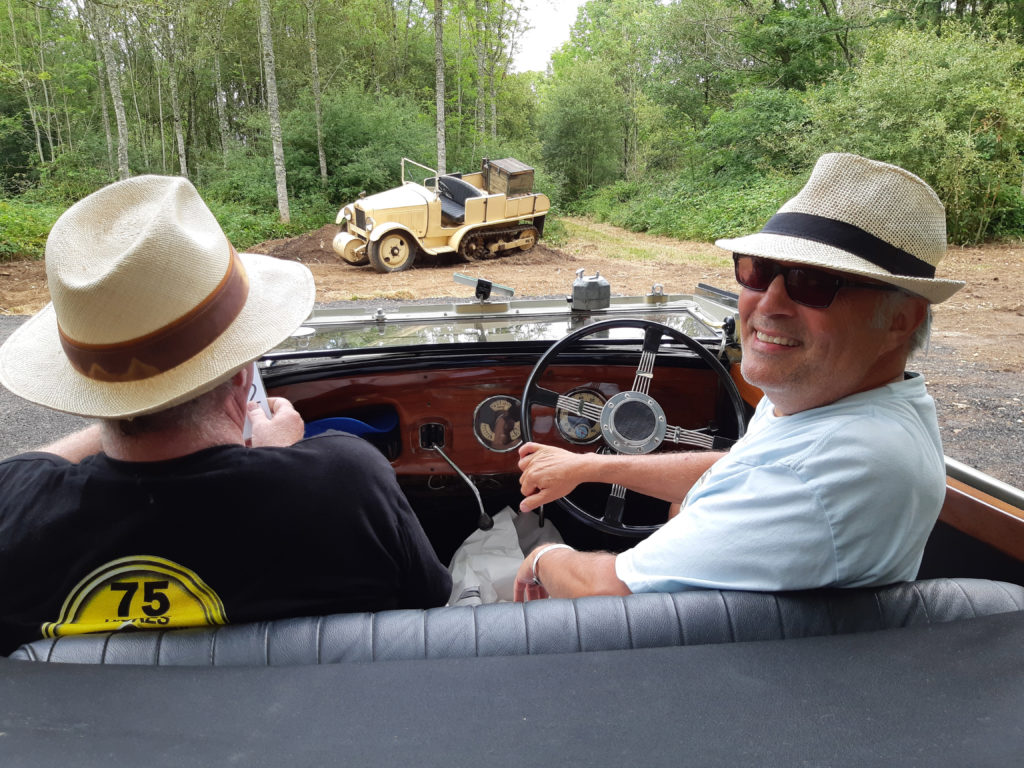
You can experience the test track driving adventure in the Traction Cabrio here in these videos:
https://youtu.be/FIa5Nu6XdKM
https://youtu.be/ah9sfbmZNsE
https://youtu.be/_Tm-9NVRCu0
https://youtu.be/wX6eU1-z-AY
https://youtu.be/wsroTDrhR-s
Coming off the track, I drove Greg’s Traction in town for a fill-up and then (with Greg’s permission) handed the keys over to Jim Sciberas and we went for
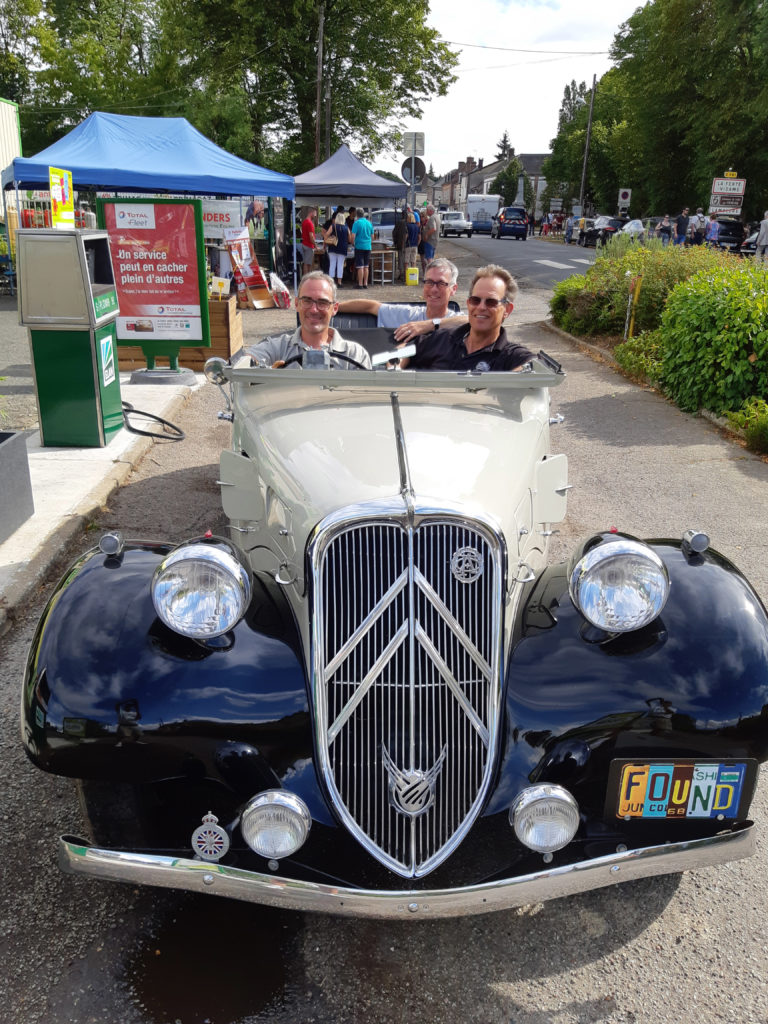
Greg’s Traction was one of three Citroëns shipped over from North America to the event. Lon Price shipped his DS21 and Larry Lewis from Toronto Canada shipped his 1953 Traction 11B. Larry didn’t do the test track in his Traction because he was nursing a fresh gearbox replacement. as upon the car’s arrival in Belgium, the gearbox housing split in two. Fortunately, he was minutes away from Jeff’s parents in Belgium and after a tow there and a call to a friend of his parents who happened to have a stash of Traction parts nearby, he was able to select a replacement gearbox and managed to install it in just 4 hours!
I can go on and on about the cars that attended and the atmosphere, but I’ll let the images in our picture gallery speak for themselves. Suffice to say, if you walked around the various display fields it quickly got overwhelming.
In addition to owners displaying their Citroëns, the Augettes auction company had a dedicated section of Citroëns that were to be auctioned of on the Sunday. While some were just your typical used classic Citroëns, there were some impressive vehicles. Total sales for the auction were € 1,523,686. Among these, a 1968 Citroën DS 21 Cabriolet bodied by Chapron, made the best sale of the day by being awarded € 214,020, a price well above its highest estimate (€ 180,000).
This DS 21 was preceded on the podium of La Ferte Vidame two other cabriolets, namely a 1938 Traction11B and a 1963 DS 19. They sold for € 182 820 and € 126 420, respectively while a 1934 Traction 7C Roadster at € 90 000 and a 1963 2CV Sahara at € 82,000) completed the Top 5.
The price of the gala dinner was 80 Euros and if you factor the entertainment value, it was worth it though the food on the other hand was pretty much equivalent to what one would be served have on a Business Class airline flight.
Alongside vehicles “out of barn”, a few new “
A gala dinner was held on the Saturday night in a giant tent structure like Tesla uses to assemble their Model S. Over 3,500 were served with quite interesting entertainment between courses. One of the acts was a girl that did instant costume changes between at least a dozen outfits at the drop of a drape between each one. The finale of that act had he being bound by a rope at the wrists, neck, chest and torso. Then a gentleman from the audience wearing a blazer was selected to stand with her and with a less than 5 second lift-up and then drop of the drape, she was still still bound but wearing his blazer! It was truly magic and I can’t imagine how that could be done, let alone on front of a live audience!
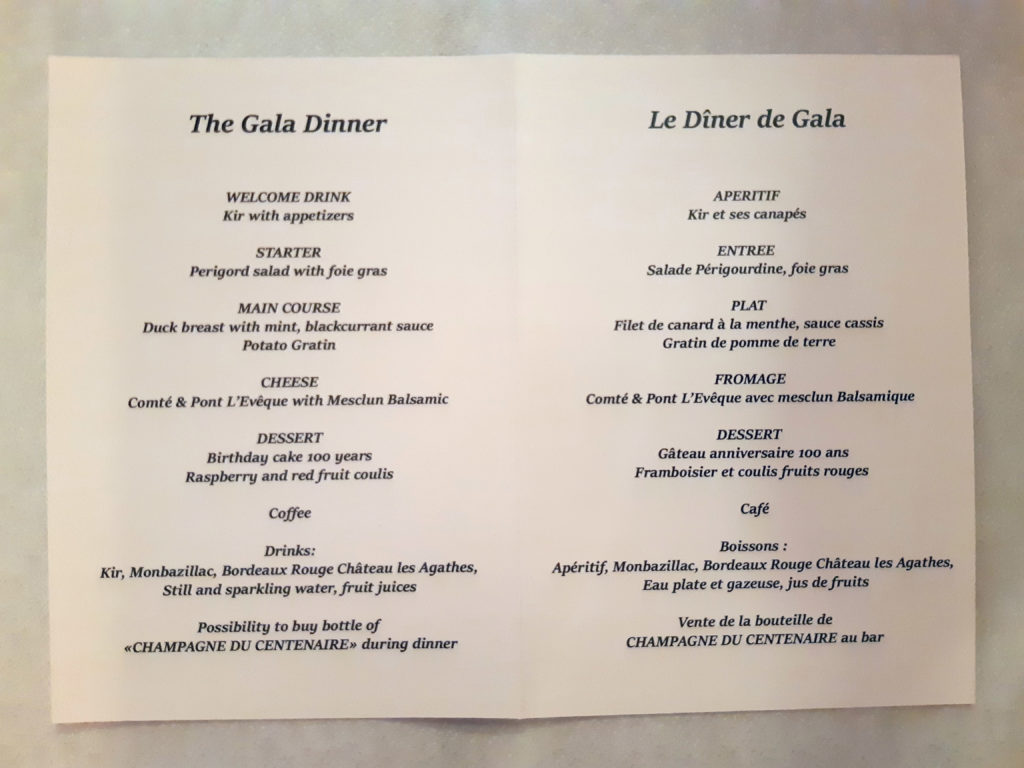



In all, the event was a phenomenal experience, one I am glad to have experienced. As many commented, it’s highly doubtful we, or Citroën under Peugeot, will be around for the 200th anniversary. So indeed it was a memorable mark in our lives.
As we dispersed on Monday, it was heartening to see the enthusiasts that participated heading back home recalling all the great moments of the previous three days. And like the Rosalie that shot by us on the way into the event, the last memory about the celebration I have before taking a vacation about France, was seeing a 1930’s C6 Citroën driving back from the event near Mont St. Michel (200
_______________________________________
An inspiring and emotional moment was this opening speech by André Citroen’s grandson Henri-Jacques Citroën:
If I were a singer, I would say: Hello – La Ferté Vidame! I’m tempted to say: Hello, Woodstock! Citroën’s Woodstock!
Hello, fans, admirers, Citroën collectors! Hello to all of you who keep the flame lit by André Citroën, which does not go out, and which continues to burn! La Ferté-Vidame… Citroën pride!
Tributes have long been paid to André Citroën throughout the world. The André Citroën quay where the Javel factory was located. The “Javel-André Citroën” metro station which was recently redecorated on the occasion of the Centenary. Here and there, boulevards and schools bear his name, an André Citroën research chair at the École Polytechnique.
In the United States, supreme tribute of the Americans, a space is dedicated to him forever at the Automotive Hall of Fame: in October 1998, he was the first Frenchman inducted into this temple and I had the privilege of receiving the trophy on his behalf.
But the most beautiful tribute is the one you are all paying him, gathered here today, to celebrate the 100th anniversary of a society that has marked our time. It is the largest gathering of brand enthusiasts ever seen in the world, it is the largest open-air automobile museum in history, certainly ephemeral but very real. While waiting for a real museum to be created one day…
It is also the largest outdoor jewellery store in the world! Indeed, your vehicles are real jewels, thanks to you who collect them with love and know-how. To see them gathered here shows how creative the brand has been and how inventive and meticulous you have been to keep them as good as new!
What other brand has created so many mythical cars? Here they are: the Type A, the Kegresse, the Rosalie, the Traction Avant, designed by André Citroën with all the inventors and engineers he has identified and highlighted. And also, those that were created after him: the 2CV, the DS, the Méhari, the SM, the CX, the C6 and all the others…
When the world’s Internet users voted for the 20th century car in 2000, it was the only brand to have distinguished itself by the presence of 3 models among the 20 most voted cars: the Traction Avant, the 2CV and the DS…
In June 1919, this outstanding automobile adventure began. But it all started before, 18 years earlier, with the manufacture of herringbone gears (chevron), which inspired the shape of the Citroën logo.
The First World War began and Bernard Citroën, his dear brother, died in the trenches. A tragedy for André, who, fighting on the front, felt exasperated by the imbalance: the Germans sent many more shells on the French lines than the opposite. Without hesitation, he asked his superior for permission to go to the government to propose the immediate construction of a factory to produce as many shells as the enemy. In 4 months, on vacant grounds in the Javel area of Paris, this factory was built. An unfailing reactivity.
When the war ended, inspired by the new industrial methods that were developing in the United States, André Citroën transformed his shell factory: he contemplate to mass-produce cars on a line in order to reduce costs and sell them at an affordable price: he wanted the car to become the means of transport par excellence. On June 4, 1919, the famous Type A was released.
A newcomer to a market where other manufacturers, such as Ford, Renault or Peugeot, have existed for a long time, it became the leading French manufacturer in 6 years and the leading European manufacturer in 10 years!
100 years later, Citroën cars are everywhere. It is impossible for me to forget my name when I walk down the street. On television, on the radio, my name resonates during advertising interruptions! I feel like I’m called all the time.
Few industries in the world are 100 years old. This sustainability has been made possible by the formidable teams of workers, engineers, executives and managers who have succeeded one another. The impetus given by André Citroën has made them “Citroënists” in soul and behavior. As if they were part of a clan that shares a vision, a motivation, a know-how, a complicity…
What a fervor are shown by those who, one day, entered the Citroën universe! You, the collectors, the enthusiasts, have always impressed me with your attachment to the brand and your admiration for its founder. A craze that sometimes gives way to veneration.
What about the photos of André Citroën, affectionately nicknamed “Le Patron”, that some of them have glued in their cars or the signs “Merci, André!” that I have observed during your gatherings?
André Citroën is an icon, as are Gandhi, Mandela and Jim Morrison in other fields. How did he become one? A friend, an American psychoanalyst, explains: as the War ends, André Citroën starts his activity with enthusiasm, optimism and determination. He conveys an energy and hope that people, saddened and depressed by the effects of war, perceive. With his charisma, he showed that anything was possible and this left its mark on people’s minds.
My Internet publications generated many messages about my grandfather. Some words come back: inspiration; spirit; national heritage; genius; master of resilience.
According to the journalist Philippe Doucet, André Citroën is guided by the 3 theological virtues defined by Saint Paul: faith, hope and charity. Faith in humanity. The hope of a better world for all. Charity, in other words, love of the other, kindness towards the other, which makes him imagine the car as an instrument that will make life easier for his fellow citizens, that will bring them closer together.
A man who was by no means attracted by the lure of profit. He owned nothing but his factories. His apartment in Paris, rue Octave Feuillet, was rented, just like the house in Deauville! Only his family, the success of his companies and always being at the avant-garde counted.
In 1924, when he launched the “Croisiere Noire”, the crossing of Africa with its new off-road Kegresse vehicles, he wanted to open communication routes where, at best, there were tracks, in order to know better the continent, bring people closer together and promote trade between them.
In 1931, when he initiated the “Croisiere Jaune”, the extraordinary crossing in autochenilles throughout Asia, from Lebanon to China, my grandfather wanted it to be “the ultimate test for men and machines”: he wanted the automobile to break down all geographical, cultural and political barriers.
These were exceptional public relations operations as the expeditionaries reported the day’s events every evening by radio. The public could thus follow the evolution of the expedition. A revolution in communication when we were in the 1920s and 1930s!
André Citroën invented everything in the field of advertising and marketing. His name on the Eiffel Tower for 10 years, the illumination of monuments, offered to the City of Paris. Signs on the roads of our country. Citroën toys for children. Etc. He had an innate sense of public relations. Promote the brand on a full-time basis…
One day, a PSA manager showed me the 1932 dealer manual, saying to me, “Look, this manual can be applied to the letter today!”.
Always at the forefront, even in the societal field. André Citroën wanted women to drive, who, at the time, did not have the same rights as men: “Modern women only drive in Citroëns” was a slogan that outraged the Conservatives.
Unfortunately, this whole beautiful story ends in tragedy.
In 1932, André Citroën lost his best friend, his right arm, the one who had moderated his ardour and reminded him of the realities: Georges-Marie Haardt, died of illness at the end of the “Croisière Jaune” he had personally led.
That same year, André Citroën visited the completely renovated factory of Louis Renault, his great rival. On leaving, he decided to modernize his Javel factory in Paris to have even more efficient facilities than those of his competitor. A major investment in the midst of the global economic crisis, which Georges-Marie Haardt would surely have discouraged him from making. Financial problems arise. To face them, it is necessary to quickly market the newly designed Traction Avant. It comes out too quickly without having been properly tested.
My grandfather, who was ill, lost control of his company and died in July 1935.
Jacques Séguéla, in his latest book “Papa, Maman, Citroën” comments on this tragic end: “André Citroën, the tightrope walker without a pendulum, will have left the stage as he lived: too quickly”.
Thus are born the legends…
The following year, 1936, the revolutionary Traction Avant became a great success. The company returns to profit and moves forward.
Louis Renault once said: “Citroën does good to us, it prevents us from falling asleep”. This sentence is still relevant today.
I have in mind the famous slogan: “You have no idea what Citroën can do for you”. Today, Citroën can make us live, together, a great moment, an unforgettable celebration, a historic high mass. And thank you to the organizers, Alain Thuret, Xavier Crespin, Arnaud Belloni and their teams for organizing it so well.
But before giving free rein to our communion, I would like to share with you two eloquent and moving messages recently received.
The first from Franck Don, the CFTC central union delegate at PSA: “When I was hired in 1986 at Citroën Aulnay, we still felt the family’s imprint with the ever-present concern for the well-being of its employees: today I am PSA Groupe (…) and I will never forget, however, the Citroën company which instilled in me the pride of working for this company”.
2nd message from a Latin American friend, a definitive message: “Citroën is France!”
Here are the final attendance stats on the Cenentaire event provided by Citroën:
